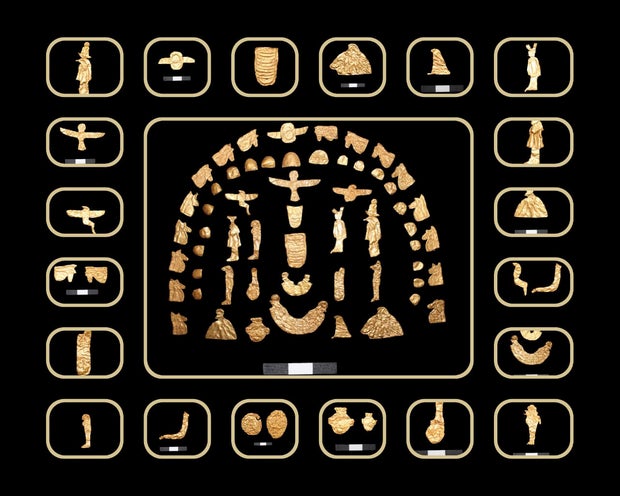A trove of artifacts from Egypt’s last dynasty has been discovered in 63 tombs in the Nile Delta area and experts are working to restore and classify the finds, an official with the country’s antiquities authority said Monday.
The artifacts include gold pieces and jewelry dating to Egypt’s Late and Ptolemaic periods, and some items could be displayed at one of the country’s museums, said Neveine el-Arif, spokeswoman for the Ministry of Tourism and Antiquities.
An Egyptian archaeological mission with the Supreme Council of Antiquities discovered the mud-brick tombs at the Tell al-Deir necropolis in Damietta city in Damietta governorate, the ministry said in a statement last month.
Archeologists said the tombs belonged to rich ancient Egyptians dating back 2,500 years, CBS Chicago reported. The burial site is believed to contain the remains of the wealthiest and most important in society at the time. The bodies were also buried with gold foil figures believed to act as servants for those people in the afterlife.
/ AP
Other items found in the area of the tombs include statues, funerary amulets and a pottery vessel containing 38 bronze coins dating to the Ptolemaic period.
The Ptolemaic dynasty was Egypt’s last before it became part of the Roman Empire. The dynasty was founded in 305 B.C. after Alexander the Great of Macedonia took Egypt in 332 B.C. and one of his generals, Ptolemy, became Ptolemy I. Leadership was handed down through Ptolemy’s descendants and ended with Cleopatra.
Egypt exhibited artifacts from the Ptolemaic period for the first time in the Egyptian Museum in Cairo in 2018, with around 300 artifacts on display.
Last May, Egyptian antiquities authorities unveiled ancient workshops and tombs they say were discovered at a Pharaonic necropolis just outside the capital Cairo.
A few months before that, archaeologists unearthed an ancient tomb in the southern Egyptian city of Luxor, known for its treasures dating back to the pharaohs.





















Discussion about this post